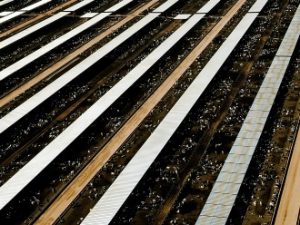The world’s population is on the rise, especially in big cities. Many skyscrapers are filled to the brim and space is more expensive than ever. With more mouths to feed and our resources already dwindling, the simple act of getting everyone fed, clothed, and taken cared of becomes a big challenge. Then, there is the problem with global warming that is affecting food production and reducing food supply aside from worsening natural calamities and disasters that make it harder for us to survive. The demand for food is ever increasing. If you rely on nature to simply provide for us, millions will probably die.
 While the majority of us see problems, entrepreneurs see opportunities. The answer to this global dilemma perhaps lies in the concept of mega farms. In essence, a mega farm is simply an extremely large, factory-style farm. While mega farms solve a big chunk of the world’s problem, it has totally transformed the farming industry and ordinary farmers are suffering in the process especially that big corporations are involved in mega farming.
While the majority of us see problems, entrepreneurs see opportunities. The answer to this global dilemma perhaps lies in the concept of mega farms. In essence, a mega farm is simply an extremely large, factory-style farm. While mega farms solve a big chunk of the world’s problem, it has totally transformed the farming industry and ordinary farmers are suffering in the process especially that big corporations are involved in mega farming.
Nearly every county in England has at least one industrial-scale livestock farm, with close to 800 US-style mega farms operating across the UK, new research reveals.
The increase in mega farms – which critics describe as “cruel and unnecessary” – is part of a 26% rise in intensive factory farming in six years, a shift that is transforming the British countryside.
Only 12 counties in the UK now host no pig or poultry farms classified as intensive by the Environment Agency. To be classed as intensive, a farm must have warehouses with more than 40,000 birds, 2,000 pigs or 750 breeding sows.
Herefordshire has more than 16 million factory-farmed animals, mainly poultry – which means the county has 88 times more factory-farmed animals than it does humans. Shropshire and Norfolk follow closely, with more than 15 million and 12 million animals respectively. Nearly every county in England and Northern Ireland has at least one mega farm, and they are also scattered across Scotland and Wales.
In the UK alone, over 800 mega farms exist to feed the Brits. They are mainly there to boost food production and generate work for many locals not just to farmers alone but they make it harder for the average farmer to survive and make both ends meet and not to mention the many cases of animal abuse, environmental destruction, and pollution issues that accompany mega farming. Even animal rights advocates aren’t too thrilled at the thought of factory farming but they exist and they’d probably be here for the long haul.
The “unnoticed” expansion of mega-farms raises serious concerns about farm animal welfare and our food system (Mega-farms transforming UK countryside, 18 July). Even less visible is the air pollution generated by intensively housed animals and the devastating impact it is having on nearby wildlife.
At high concentrations, such as from these mega-farms, ammonia and other nitrogen emissions cause direct damage to lichens, mosses and other plants, including bleaching and discolouration.
In polluted, nitrogen-rich “fertile” conditions more vigorous, “thuggish” species thrive, making it near impossible for more sensitive wildflowers to survive. Plants known to be particularly at risk from air pollution include harebell (Campanula rotundifolia), which was recently classified as near-threatened in England, and bird’s-foot trefoil (Lotus corniculatus), which supports more invertebrates than any other herb. Soil fungi and their dependents, including many cherished orchids, are also especially vulnerable. Species richness depletion from air pollution has knock-on effects for bees, birds and all the other wildlife which depend on healthy plantlife.
We don’t ignore the benefits offered by these mega farms as food production should definitely be increased to keep up with the demands of the times. However, the planet is suffering mainly because of negligent and harmful human activities like factory farming. This type of intensive farming aims to boost productivity but at a cost and the environment may be on the losing end here. There are pros and cons to mega farming and we can’t deny it does serve its purpose. The best we can do is get ourselves educated on concepts like this one and enrich our knowledge about other environmental conservation efforts we can try to protect Mother Earth from more harm.
